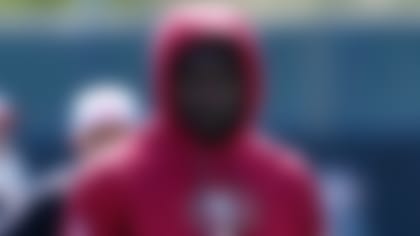Maybe we had it all wrong about the Pittsburgh Steelers.
At one point, they looked to be in the best position of any team in the NFL. They roared to 3-1 while their starting quarterback was serving a suspension. It only made sense to assume they would get dramatically better from there, right?
Not quite.
Since Ben Roethlisberger's return, the Steelers have gone 3-2. Of the four high-quality teams they've faced this season, they've managed to beat only one, Atlanta, in overtime in the season-opener.
The Baltimore Ravens handed the Steelers their only loss of the first quarter of the schedule, the last without Roethlisberger. But things haven't exactly gotten a whole lot better. In Week 8, the Steelers suffered a loss at New Orleans that many Steelers fans/apologists were saying was inevitable because the Saints were playing before a fired-up, primetime Halloween crowd and were desperate to rebound from an embarrassing loss to Cleveland in Week 7.
A week later, the Steelers barely hung on for a victory against the struggling Cincinnati Bengals. And last Sunday night they were humiliated at home by the New England Patriots.
All of a sudden, the Steelers don't look like the team that so many of us were crowning as the AFC's best, if not No. 1 in the NFL, only a few weeks ago.
What's wrong?
The most obvious problem is injuries on both lines. The Steelers are clearly having problems on an offensive line that has lost two starters for the season -- guard Willie Colon and tackle Max Starks -- and was without a third guard, Chris Kemoeatu, against the Patriots.
The Steelers' defensive line is feeling the ill effects of being without ends Aaron Smith, who might miss the rest of the year with a triceps injury, and Brett Keisel, who has missed three of the last four games with a bad hamstring.
"To me, the quarterback and the running backs and the receivers, those are all the hood ornaments," said former NFL receiver and current NBC "Sunday Night Football" analyst Cris Collinsworth. "And then you've got the engine -- the defensive line and the offensive line. And their engine's falling apart on them. You can only survive without a carburetor and an oil filter for so long."
But the Steelers' troubles, according to Collinsworth and other analysts who have watched the team closely, don't end with the injuries. They have some fundamental problems, too. The most prominent: the structure of their offense.
The Steelers are at their best when they have an early lead and are able to pound the ball on the ground. Their offensive line is ultra-big and ultra-physical. But it also is ultra-slow, with the exception of rookie center Maurkice Pouncey. When the Steelers fall behind and have to rely heavily on the pass, their protection can easily fail against a team with a quick, aggressive pass rush, such as the one the Patriots unleashed.
In addition, Roethlisberger is facing greater challenges than ever to make his improvisational, run-around-until-receivers-get-open style of play work as well as it did in allowing him to help the Steelers win two Super Bowls.
According to the analysts, it has nothing to do with any rust from Roethlisberger's suspension or issues with his adjusting to being back with his teammates or vice versa. It is a case of opponents having a much better handle on how to defend him.
In particular, two of the best defensive minds in the league -- Saints defensive coordinator Gregg Williams and Patriots coach Bill Belichick -- applied the perfect strategy to minimize Roethlisberger's impact while their teams' offenses were able to move in front. They concentrated on keeping him in the pocket and getting him on the ground before he can find a receiver who gets free because of the inevitable breakdown in coverage.
"Ben's more comfortable throwing the ball in the second and third phase of the play, not the initial phase where most quarterbacks are getting the ball out," former NFL defensive back and current NFL Network analyst Solomon Wilcots said. "Peyton Manning is a rhythm guy. Tom Brady, rhythm guy. Three-step drop, bam. Five-step drop, bam. Ben is going to wait, wait, wait, coverage breaks down, he spins around, rolls out, (and says) 'Now my receiver can get open, and I'm making big plays.'
"But what defenses are doing, especially the last couple of games, is they've contained him. They've not allowed him to get outside the pocket, and they've tackled him. He's not able to run around. He's trying to get the play into the second phase and third phase, but they're not allowing him to do that because of containment and tackling him."
The Steelers' coaches need to take a hard look at what has happened in recent games and devise strategy that gives opposing defenses something to think about other than Roethlisberger's determination to extend plays.
-- Bill Cowher on his former team, the
Steelers
"If I were coaching the Steelers, I would put together a package of plays where Ben had to get the ball out immediately," Collinsworth said. "I want to establish in the defense's mind that Ben's not going to hold it on every pass play, which is kind of what he's doing right now. I don't say that that's wrong, but in this league, you can't do anything all the time. It's like throwing fastballs to all hitters. I don't care how good your fastball is, you're going to get toasted on that."
Wilcots thinks the solution is to restore balance to the offense. With trust in Roethlisberger's playmaking ability and big arm, and the speed of wide receiver Mike Wallace, the Steelers sometimes have an over-dependency on trying for the big play. If they are to be the team that can consistently compete on a high level, they also need to pound the ball on the ground.
It might not be as easy as it was before the injuries on their offensive line began to mount, but it is necessary.
"They've got to develop the offense and its flexibility and not be overanxious to be explosive at the expense of being ball-control," Wilcots said. "I'm not sure they're in sync with being with what I call a good, complementary offense. They think the defense is so good that they can just throw the ball 40 times a game, maybe get a pick and a turnover … 'Oh, our defense will save us.' Well, clearly the other night the defense couldn't because they didn't have a sack or an interception on Tom Brady."
Which brings up another fundamental problem the Steelers are facing: Their defense is aging, with more than half of its starters and several backups 30 or older. The obvious advantage is that they have players who know how to deal with the complexities of Dick LeBeau's 3-4 scheme. The obvious disadvantage is that they're sometimes too old to execute effectively.
In some cases, the Steelers simply don't have the speed to keep up with faster and younger offenses, such as the one the Patriots brought to Heinz Field. The spread attack the Pats employed took away from the Steelers' strength, which is their pass rush, and forced them to spend much of the game chasing around receivers. That was particularly overwhelming for the defenders trying to keep up with rookie tight end Rob Gronkowski, who caught three touchdown passes.
"Tom Brady's a pretty unique character," Collinsworth said. "I don't see the Raiders (Pittsburgh's Week 11 opponent) lining up in a spread offense with their offensive line being able to pass-protect these guys. When it's Tom Brady back there, that's a different story. Like Peyton (Manning), he's not going to take those hits because he knows how to quickly make the read to get it out of there and make you look bad.
"And when (Lawrence) Timmons and (James) Farrior and (James) Harrison are sitting 10 yards off the ball playing zone coverage, that's not scary. That's like when Lawrence Taylor was dropping in a zone, and you went, 'Thank you very much.' What's scary about (the Steelers) is when they're coming after your quarterback. And by using the two tight ends a lot, (the Patriots) were even able to sort of keep them out of some of that."
Former Steelers coach and current CBS studio analyst Bill Cowher cautioned not to overreact to what has happened in recent games, especially in the debacle against New England. He thought the outcome had as much to do with the Patriots' determination to rebound from their ugly loss at Cleveland in Week 9 as it did with the Steelers' poor performance, calling it "more of an aberration than anything else."
"There's still a lot of football left to be played," Cowher said. "I think we've got to be careful not to draw too many conclusions. If they can stay healthy, and if (running back Rashard) Mendenhall can stay healthy and those two outside 'backs (Harrison and LaMarr Woodley) can stay healthy, I think they're going to be right in the hunt."
Follow Vic Carucci on Twitter @viccarucci.



